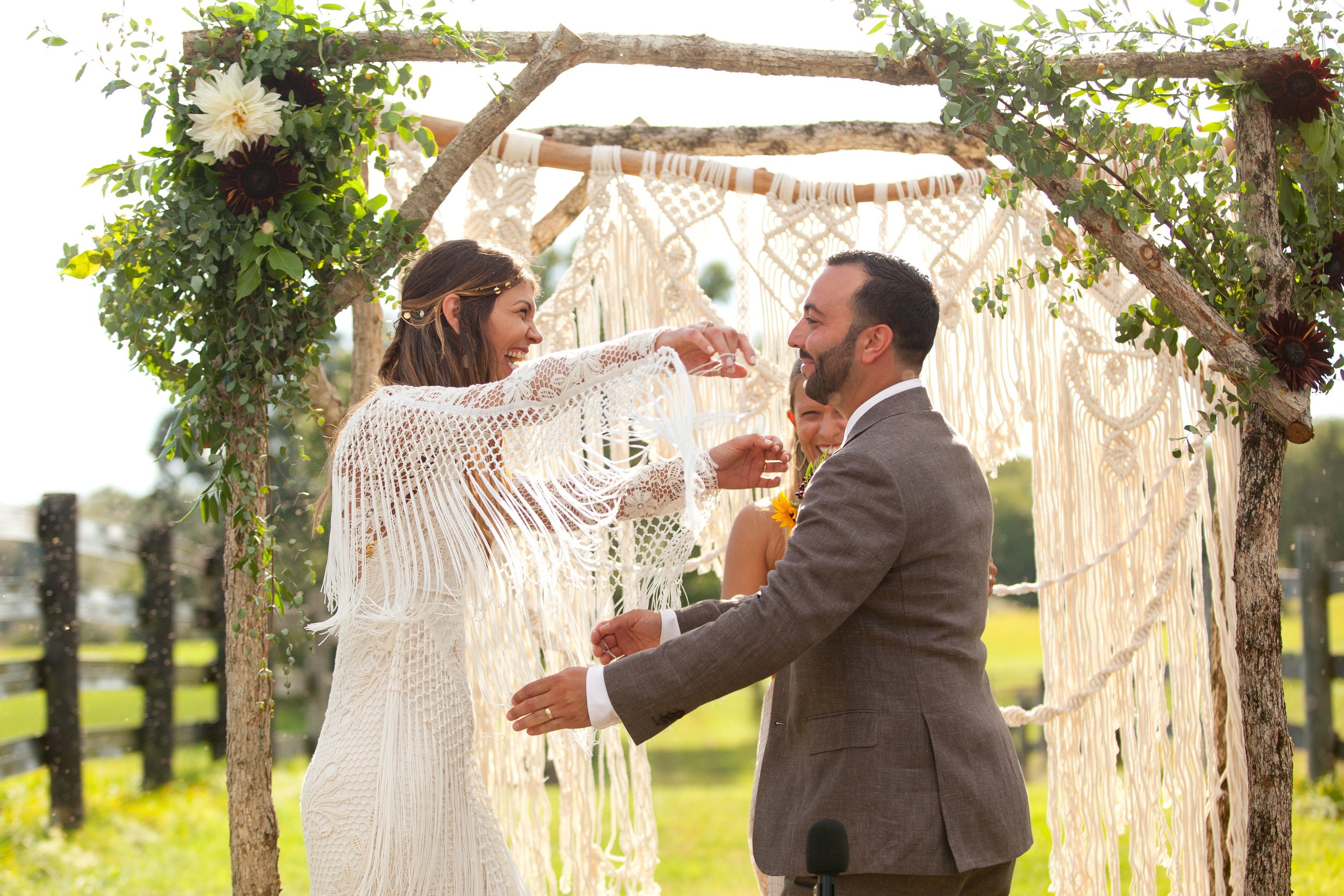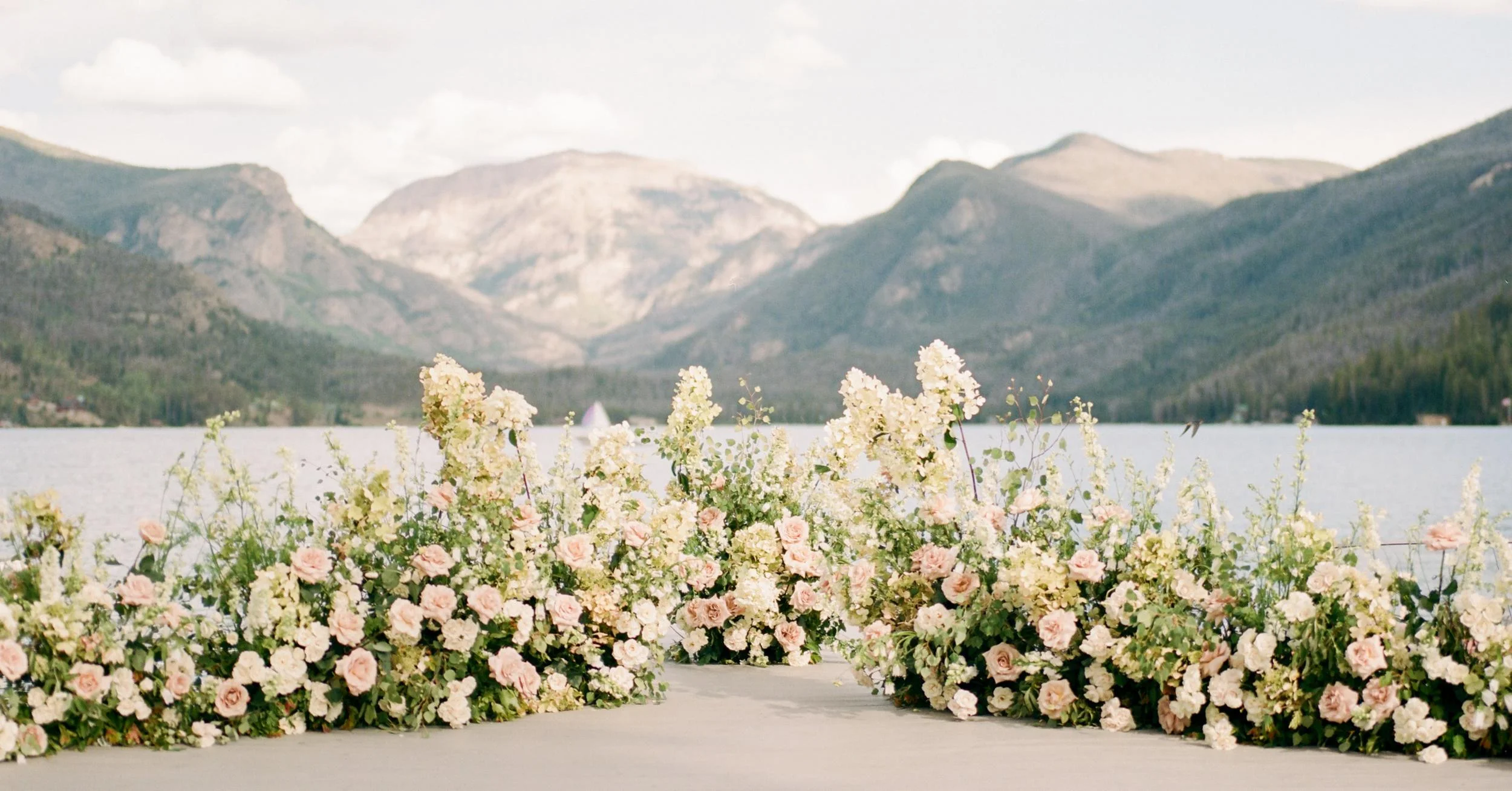Changing your flower farm business model
For eight years beginning in 2008, our flower farm was focused on growing flowers for wholesale markets, mostly delivering to local florists. Over the past couple of years, however, we transitioned our farm into a wedding venue and floral design studio. Now we focus mostly on retail markets such as weddings at our farm, our CSA Flower Share, weddings at other venues, and DIY brides. It was a variety of personal, business and marketplace factors all sending signals at once, that led us to the decision to transition our business.
Kevin Trimmer Photography
On a personal level, after years of intense physical labor and long working hours, we were ready for a change and a way to “work smarter, not harder.” Physical ailments had developed from overuse and were making it clear that we were going to have to modify our habitual behavior of overworking ourselves and find some life balance. We had a seemingly thriving business, but we were approaching burnout. After a while, each time I dropped off an order, I had a sinking feeling that the wholesale stem prices we were getting just weren’t enough to justify the amount of hard work, expense, and time we had put into growing them. It was time to re-evaluate our business model.
On the business level, we realized we would have to reach new customers a further distance from the farm to increase our revenue (which we didn’t want to do). Another option was to potentially sell more stems at retail, and we could make the same money growing half as many flowers and reduce our workload. Or, we could grow the same amount and double our revenue. I also thought it would be great if I could eliminate all the driving around and have people pick up their flowers at the farm, freeing up more time for what I was falling in love with which was the floral design aspect of the business. On deciding whether to scale up or down, we realized that it’s okay to downsize and transition into something new rather than trying to do more of what we were already doing.
Kevin Trimmer Photography
Market conditions had also changed over the past few years. When we first started South County Flowers, ours was the only farm in the area delivering flowers to Rhode Island florists on a weekly basis. As time went on and the local flower movement grew, I noticed sales plateau or even decline as more flower farmers started up and entered the same delivery area and florists began to spread their local flower dollars around. These farmers all happened to be women who became my friends. We shared advice and growing tips, sometimes buying flowers from each other in a pinch, meeting for coffee in the winter to discuss farming techniques, and generally being a part of the local flower community together. It was important to me to continue in the spirit of "collaboration over competition."
All of the factors mentioned above nudged us in the direction of giving up our wholesale route and re-branding as a wedding venue and floral design studio.
To this end, we started a Flower CSA and developed a landscaped area of our farm for hosting weddings. We started slowly by getting our feet wet in the wedding industry, hosting a few events and offering CSA Flower Shares while still doing wholesale deliveries. Since we are the exclusive flower vendor for weddings at our farm, we were able to more accurately target our ideal clients: couples who like the idea of getting married on a flower farm, and having me design the wedding florals with local, seasonal flowers grown on the farm for their event. And as a bonus, this was a market exclusive to our farm where we wouldn’t have to compete with other growers, and in fact, could turn to them as a resource if needed.
We received so much positive feedback from our first few couples, their families, and friends, as well as other vendors such as caterers, photographers, etc., that we decide to drop the wholesale route entirely and focus almost 100% on our retail markets. I say ‘almost’ because we still value our florist relationships and offer them flowers for pick up when we have availability.
Moments by Mackenzie
For our marketing strategy, we simply targeted a different audience by tweaking our social media posts to be more focused on weddings at our farm as well as DIY brides and changed the wording on our website to showcase our new priorities. (I admit I’m not the best at posting frequently, but when I do it does generate interest.) We depend largely on word of mouth for referrals. Each time a wedding takes place here is another 125 to 200 people who could potentially spread the word about our venue. I had gradually gained experience over the years designing for weddings and parties here and there, but now I began attending floral design workshops and classes, in addition to reading books and following the work of designers I admire. I let my CSA customers know that their bouquets would be in a variety of shapes and sizes so I could practice my craft. I had always referred to myself as a ‘cut flower grower,’ but now I began to market myself as a ‘farmer florist.’
Making this transition in our business has been an excellent decision for us. It has allowed us to be more creative, to have another revenue stream, more life balance, and to work closely with people who appreciate the beauty of the farm and flowers and are celebrating a very joyous time in their lives. How do you know when it’s time to transition your business? Look at the signs, trust your intuition, and focus on the parts of the business you love and enjoy doing.









